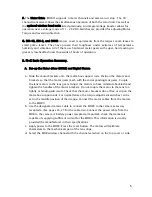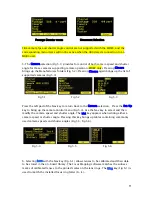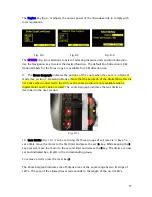
5
F. The Motor Driver (MDR3) supports 4 motor channels and camera run/stop. The 30
channel transceiver allows the simultaneous operation of both the Hand Unit 3 as well as
the optional wireless hand units listed previously. An integral voltage booster allows for
operation over a voltage range of 11 – 28 VDC. Switches are provided for adjusting Motor
Torque and reversing direction.
G. DM-1X, DM-2, and DM4X motors cover requirements from the largest zoom lenses to
small prime lenses. They have proven their toughness under extremes of temperature,
humidity and vibration. All of them use hardened metal gears with super-hard coating to
give very low backlash over thousands of hours of operation.
II. FI+Z Basic Operation Summary
.
A.
Set-up the Motor driver (MDR3) and Digital Motors.
a.
Slide the motor brackets onto the matte box support rods. Position the motors and
brackets so that the motor gears mesh with the corresponding lens gears.
Couple
the lens motors to the lens gears
.
Adjust the motors to have minimum backlash and
tighten the handles of the motor brackets. Do not couple the motor to the lens too
tightly or binding will result. Check that the motor brackets do not flex or slip on the
matte box support rods. For normal lenses, the torque adjustment switches can be
set in the middle position of their range. Connect the motor cables from the motors
to the MDR3.
b.
Use the designated camera cable to connect the MDR3 to the camera accessory
receptacle. (See pages 24, 25 for the cable list). Connect the power cable from the
MDR to the camera or battery power receptacle. Important: check that camera is
capable of supplying sufficient current for the MDR3. This information is usually
provided the manufacturer in their specifications.
c.
Apply power to the MDR3. Press the reset button. The motors will calibrate
themselves to the mechanical span of the lens rings.
d.
Select the MDR wireless channel with the channel selection on the top cover or side.






































